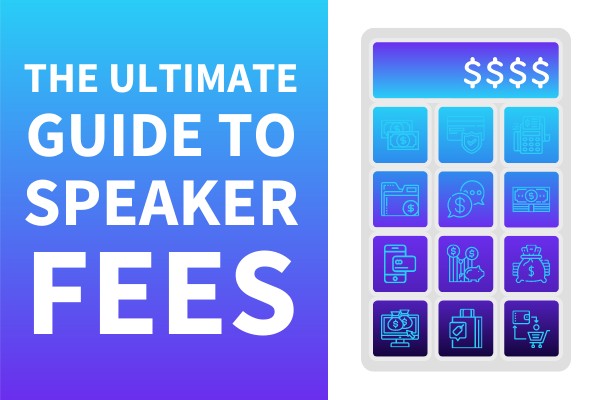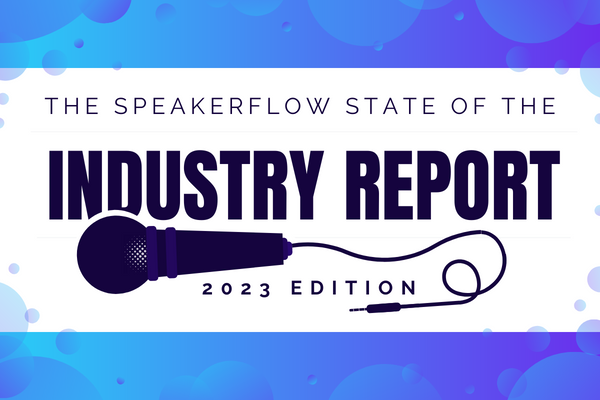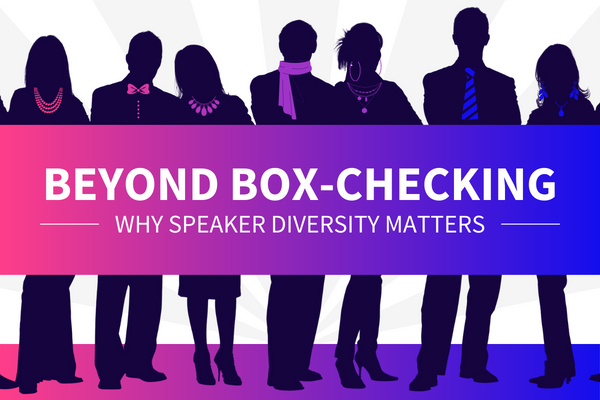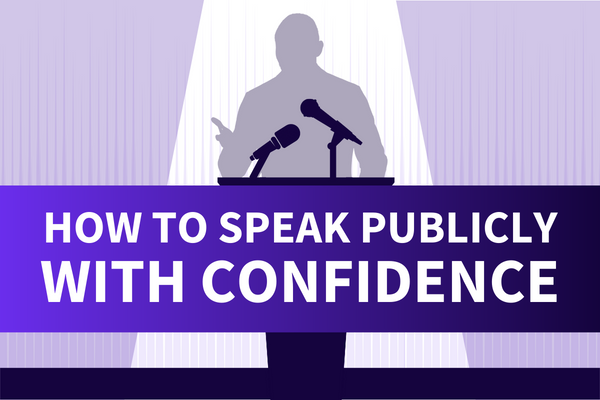When launching a thought leadership business, one of the toughest topics to tackle – and one of the hardest to get a straight answer for – is speaker fees. Especially as a new speaker, there can be a seemingly endless list of things to consider before setting your fees.
For instance, how much experience do you have? Does a higher fee mean that you have to provide more add-on products, too? And what about virtual events? Can you charge the same for those as you would for a live event? These are just a few of the many things we’ve heard from speakers in our network, either from established speakers looking back on their past anxieties or from aspiring speakers facing them now.
So, with that in mind, this guide is all about speaker fees for new and established speakers alike. Below, we’ll cover everything you need to know as you set your own fees, including what factors affect them and how to steadily increase them over time. We’ll also break down some of the industry standards for setting speaker fees. That way, even if you’re starting from scratch with zero speaking experience, you can set fees confidently and rest assured you’re working towards bigger fees in the future. 👍
Common Factors Affecting Speaker Fees
Regardless of the time you’ve spent building your thought leadership business, there are a handful of factors that affect all professional speakers. As your business and reputation grow, some of these factors may affect your fees more than others. Below are six of the most prevalent ones to keep in mind as you strategize your speaking prices for the coming months.
Pro Tip: As the most successful thought leaders will tell you, there are always ways to get around these factors, provided that you know how to sell and you continually advocate for your worth. Later in this guide, we’ll cover a few of those sales strategies in more detail. So, even if some of the following factors seem daunting, hang tight – we’ll break them into more manageable hurdles shortly.
Speaking Experience

The first factor to affect speaker fees is your level of speaking know-how. Total, “speaking experience” refers to the amount of time you’ve spent on stage. It includes every presentation you’ve done, every conference you’ve presented for, and every bit of coursework or coaching you’ve undertaken in order to improve your public speaking skills. Generally, the more speaking experience you have, the better a speaker you are. By extension, this allows you to charge more for your speaking presentations, as your words will likely have a bigger impact on the audience than a less experienced speaker.
Industry Experience
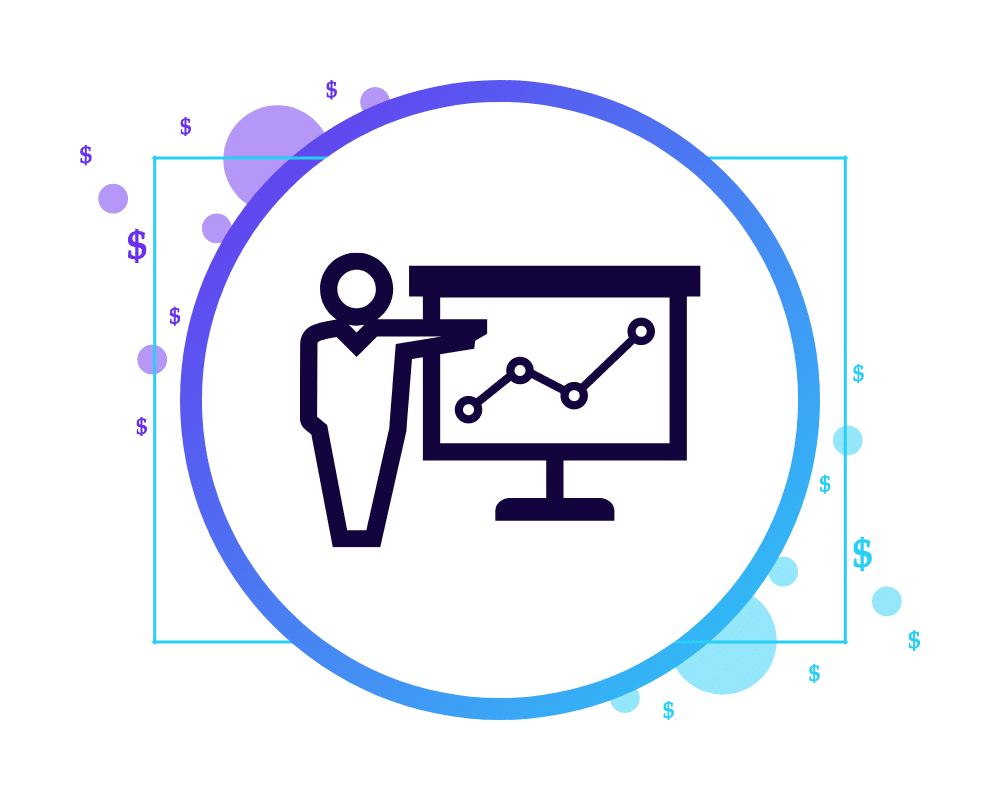
The second factor affecting speaker fees is your knowledge within your niche, or industry experience. All in all, “industry experience” refers to the amount of time you’ve spent working with members of your focus industry(ies). It includes your own professional experience – from entry level employment to C-suite positions – as well as any volunteer work. Like speaking experience, growing your industry experience is about investing the time and energy to learn as much as you can about the industries you’re pitching with your products and services. As a result, (again, generally) the more industry experience you have, the higher your fees can be when serving that industry.
Event Location
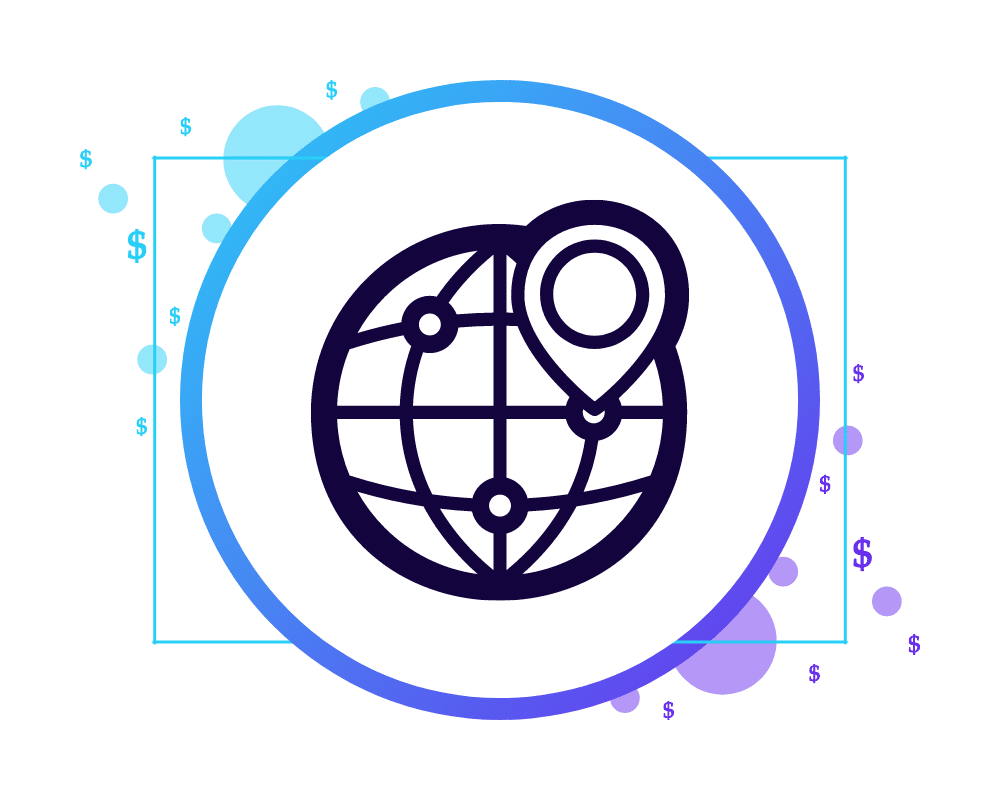
Third of our speaker fee factors is location. “Event location” – surprise, surprise – refers to where the event for which you’re speaking will take place. Depending on your focus, you might be considering local or regional events. On the other hand, your ultimate goal may be regular bookings around the world and, by extension, an international speaking reputation. Either way, the most important aspect of event location is its inconvenience for you. No matter where it is, if it’s inconvenient for you to get there (far from the event you’re doing immediately prior, across national borders, etc.), you can charge a higher fee. Conversely, if it’s a local or virtual event, your fees will typically be lower since it’s more convenient.
Travel Expenses
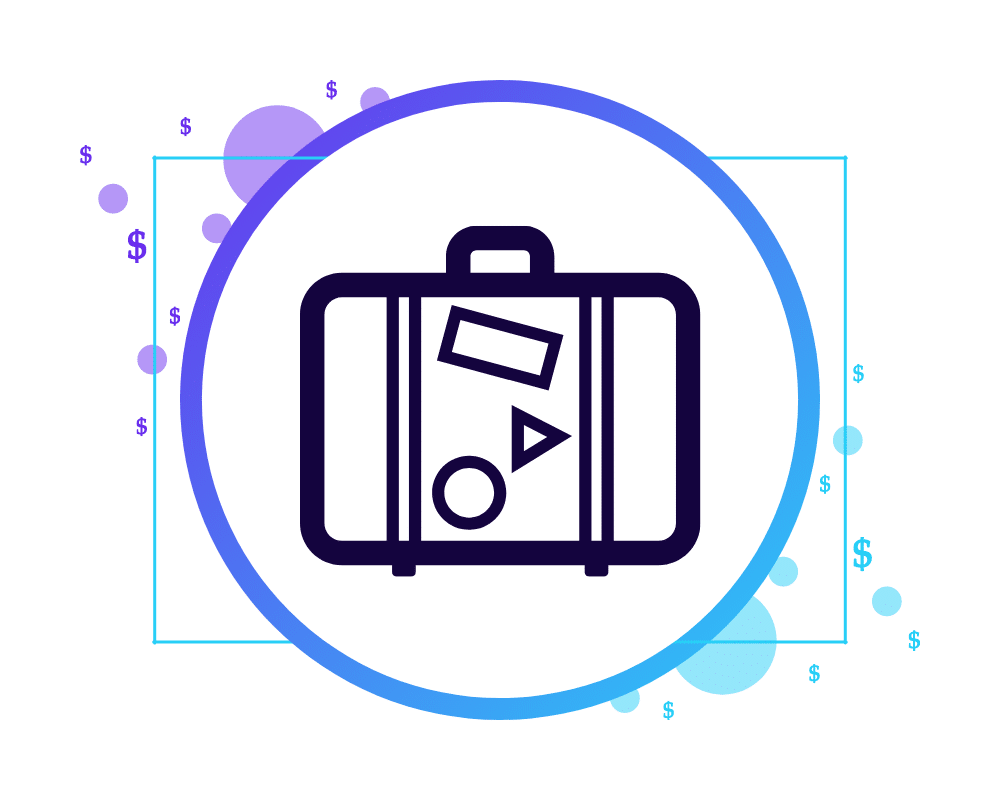
The next factor to consider is travel costs. Travel expenses, like event location, relate to where the event is taking place and how difficult it will be for you to get there and back. If it’s going to be difficult and, consequently, expensive, your fees can be higher. Likewise, if you expect clients to cover the cost of your hotel room, plane tickets, and meals, that means a higher fee, too. Essentially, if it would be expensive for you to travel to the event on your own time, include those expenses in your client’s bill.
Contract Components
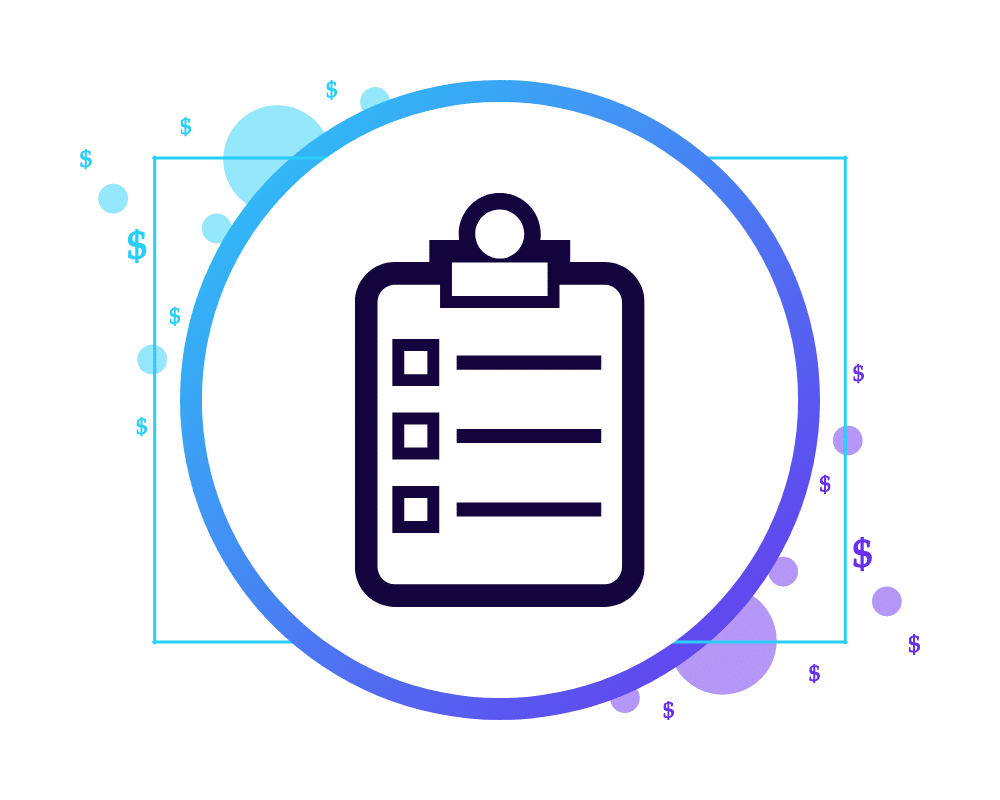
Your contract components include all of the products and services you’ll be providing for your client. Speakers with extensive experience (or celebrity speakers) can charge a premium for a single speech. However, speakers with low to moderate experience – both in speaking and in their focus industry(ies) – can boost their fees through elements of their contract. For example, you may only be able to charge $5,000 for your keynote, but you can supplement that with post-event consulting, resources, and social promotion to increase your total contract value to $10,000 or more. In short, when it comes to your contract, the term “fee” doesn’t simply refer to your speech. It refers to everything you offer pre- and post-event to support your speeches, too.
Sales Confidence
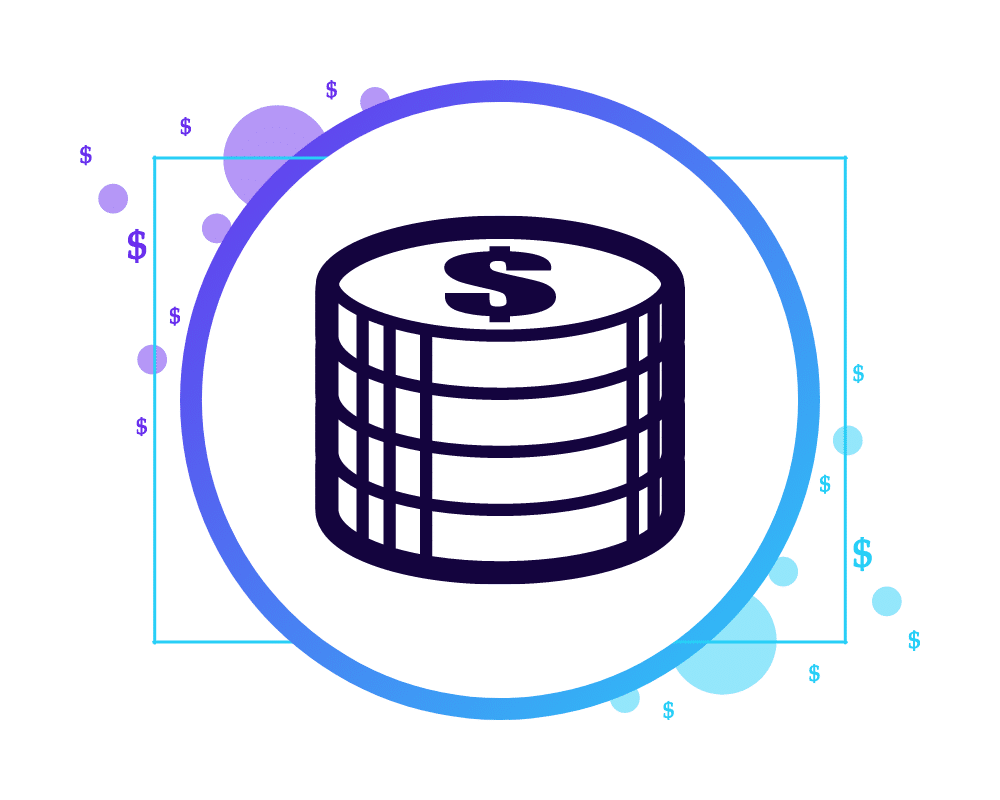
And, finally, the last factor affecting speaker fees is sales confidence. At its core, closing a speaking deal – or any deal, for that matter – relies on overcoming objections. Maybe your potential client is arguing that the price is too high or your program is too long. No matter what their objection, your job is to debate them well enough that they change their mind (assuming they’re a good fit for your programs, of course). The better you’re able to do that and the more confident you become in your ability to sell, the higher your fees can be.
We’ll talk about building your sales skills shortly, including what strategies the most successful speakers use to command their full fee every time. For now, the key thing to remember is that your speaker fees depend partly on mindset. Even if you’re a new speaker with little stage experience, an confident, assertive sales mindset enables you to successfully argue for your worth. From that point, the additional ways to boost your fees will seem like a piece of cake. 👌
How To Calculate Your Speaker Fees
Speaking of ways to boost your speaker fees, lets first tackle the vital, precursor step: setting your speaker fees. Overall, speaker fees range immensely across the industry, from $1,000 or less to more than $30,000 per gig. Depending on how you rank for the factors we covered above, you may fall closer to one end of this spectrum or the other.
One way to determine exactly where you fall – and what your “starter” fees will be – is to backtrack using your revenue goals. This method starts with your sales goals including how many keynotes you want to book this year and how much or how little you want to charge. From there, you extrapolate to determine how many leads you’d need to reach out to and deals you’d need to close in order to meet those goals. As you’d expect, the higher your fees, the fewer keynotes you need to book and fewer leads you need to prospect.
To find your starter fee – and the corresponding numbers of prospects, leads, and deals you’ll need for the next year – simply follow the steps below. Then, when you’re considering changing your fees, come back to this method and repeat, so you can test the practicality of your fee goals before making them official.
1. Determine the Number of Keynotes You Want to Book Each Year
First, answer the question “How many keynotes do you want to book each year?” This value is a contributing factor in determining your sales “law of averages.” If you haven’t heard of it, the basic sales law of averages states that, for every 50 leads that engage with you, five will produce conversations for you to qualify them and pitch your services, three will lead to proposals, and one will close. In other words, on average, for every keynote you want to close, you should anticipate having to reach out to around 50 leads.
Obviously, this number can vary widely depending on the quality of your leads and your reputation in your focus industries. For example, if you’re contacting a lead based on a referral from a previous client, they’re dramatically more likely to close. Contacting a repeat client? Also more likely to close. Reaching out to leads with a sales process you know converts more than 2% of the time? You guessed it – You’re likely to close more than one gig.
Long story short, defining your ideal keynote count just helps gauge how many leads you need to reach out to in order to hit that goal. The higher that keynote count, the more leads you need to contact, generally speaking. We’ll cover some additional ways to boost your conversation rate in a later section, though. That way, out of 50 conversations, you can close as many as possible.
2. Determine Your Low-End and High-End Fees
Second, define answers to the questions “What’s your average low end fee?” and “What’s your average high end fee?” These two values – combined with your keynote total from Step #1 – determine your total projected revenue for the year, the number of prospects you’ll need to contact, and the number of deals you’ll need to close. Again, the higher your fees generally are, the higher your annual revenue goal can be without increasing your keynote count.
Example Calculation #1:
Low End Fee: $1,000
High End Fee: $5,000
Average Fee: (Low End Fee + High End Fee) / 2 = ($1,000 + $5,000) / 2 = $3,000
Ideal Keynote Count: 25
Revenue Goal: Average Fee x Ideal Keynote Count = $3,000 x 25 = $75,000
Approximate Number of Leads To Contact: (Ideal Keynote Count x 100) / 2 = (25 x 100)/ 2 = 1,250 leads
Example Calculation #2:
Low End Fee: $5,000
High End Fee: $10,000
Average Fee: (Low End Fee + High End Fee) / 2 = ($5,000 + $10,000) / 2 = $7,500
Ideal Keynote Count: 10
Revenue Goal: Average Fee x Ideal Keynote Count = $7,500 x 10 = $75,000
Approximate Number of Leads To Contact: (Ideal Keynote Count x 100) / 2 = (10 x 100)/ 2 = 500 leads
Example Calculation #3:
Low End Fee: $2,500
High End Fee: $7,000
Average Fee: (Low End Fee + High End Fee) / 2 = ($2,500 + $7,000) / 2 = $4,750
Ideal Keynote Count: 20
Revenue Goal: Average Fee x Ideal Keynote Count = $4,750 x 20 = $95,000
Approximate Number of Leads To Contact: (Ideal Keynote Count x 100) / 2 = (20 x 100)/ 2 = 1,000 leads
3. Get to Work!
Lastly, start selling! Although you set values above for keynote count, low-end fee, and high-end fee, all of these numbers can change as your sales skills improve and as you gain more and more experience as a professional speaker. You can also incorporate sales tools – like the Speaker Intel Engine and SpeakerFlow CRM – to help streamline your sales processes. That way, even though your fees may be less than ideal today, the path to your ideal fees will be as stress-free as possible.
How To Boost Your Speaker Fees
Besides sales technology, there are dozens of other strategies that can help you argue for higher fees. Some depend on your budget and others will get easier as you build a team. But, most importantly, all of the following strategies have been tested – and proven – by countless established speakers around the world. Below, read about each of them in more detail.
Build Tiered or Packaged Offerings
The first way to boost your speaker fees is to structure them into “packaged” options. In this strategy, each “package” or “tier” includes several products or services. For example, you may have one tier that includes a keynote for $2,500 and another that offers a keynote and a post-event consultation for $3,500. You can also work in elements like free copies of your book, access to an online course, or added facetime with their audience.
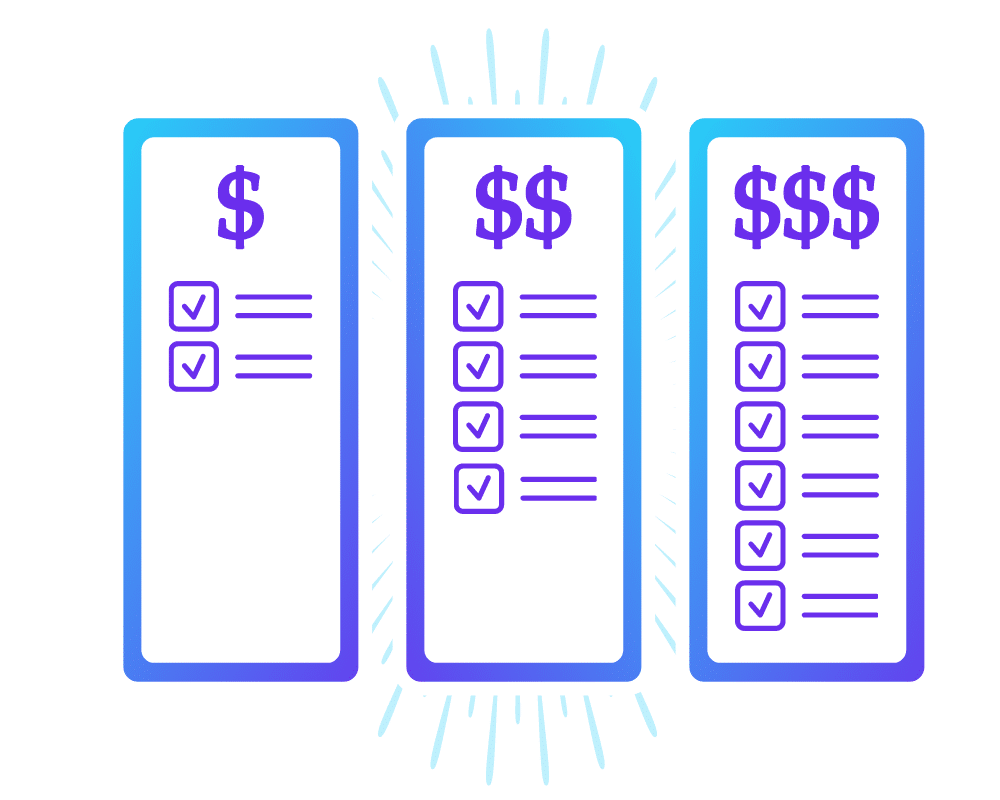
When determining what to include in your speaking packages, it’s also helpful to follow best practices for tiered pricing, including:
- Keep it simple. Only offer a handful of options (we recommend three) so it’s easy for potential clients to choose. Too many options can be overwhelming or confusing.
- Be transparent. Each package should clearly list which products and services are included as well as the total package price. When it comes to price, especially, potential clients should have zero confusion.
- Relate packages to your buyer personas. When potential clients immediately see a package that fits their needs, they get a sense of how well you know their industry, making them more likely to hire you. To define your buyer personas if you haven’t already, HubSpot’s persona writing guide is a good place to start.
Whatever you choose to include in your speaking packages, make them all available to potential clients at the same time. This shows clients what they could have in an ideal world (the most expensive package), making the other options (your less expensive offers) much less enticing. Plus, it’s a much less aggressive way to sell your services, as you’re allowing the client to make the final decision about what’s included in their fee.
Refresh or Rebrand Your Speaking Business
The second strategy for increasing your speaker fees is rebranding. Especially if you’re a new or inexperienced speaker, having a polished brand can go a long way in making you appear credible and your services appear valuable. Additionally, a polished and up-to-date brand shows your attention to detail. After all, if you take such pride in your own company’s appearance, you likely put the same care into your offerings.
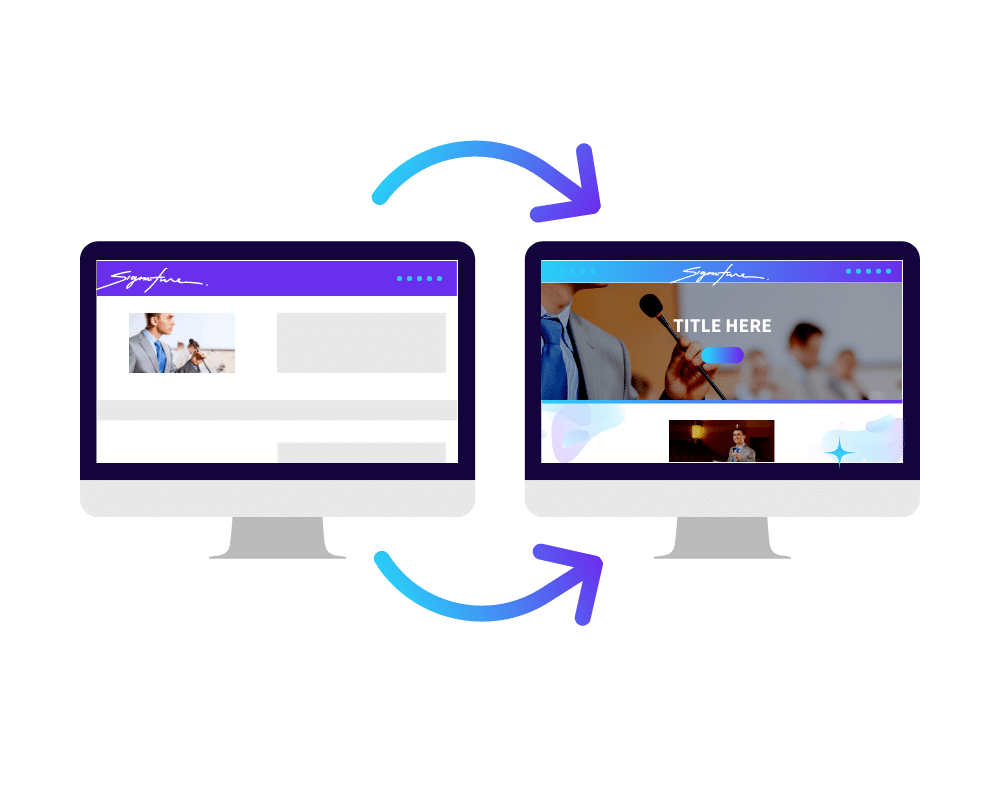
To determine whether or not your brand needs a boost, it’s important to first put aside any ego. Then, ask yourself some tough questions, starting with, “Is my speaking collateral on par with that of my competitors?” If your competitors’ websites all use the same design elements – such as gradients and contrasting colors, for example – but yours doesn’t, chances are you need a brand refresh.
Another question to consider is, “Does my brand reflect my values?” At the very least, your brand is intended to be the physical representation of your message. So, whether your message is classic or contemporary, if your brand doesn’t reflect it, you’re probably due for a redesign. If you’re unsure, hire a graphic designer for a brand evaluation and tell them the values you want to convey. Branding is part of their job, so they’ll be able to tell you pretty quickly. Then, if you need to rebrand, they can do that, too!
Lastly, the third question to ask yourself is, “Am I proud of the brand I have now?” Ideally, your brand should make you excited, proud, and confident about the work you do so that you’re pumped to share those feelings with potential clients. If your brand doesn’t currently meet that mark, solve that problem sooner rather than later. Trust me, as our team’s graphic designer. It’ll pay off big-time. 👍
Level Up Your Marketing Efforts
Third, when increasing your speaker fees, don’t forget about the other side of the lead generation coin: marketing! In a successful speaking business, leads should come from a variety of sources, including outbound and inbound marketing. The first of these, outbound marketing, is about approaching potential clients directly (albeit in a less aggressive manner than you might for outbound sales) in order to capture their attention and book a deeper conversation. Some examples of outbound marketing include social media advertisements, your email newsletter, and paid search ads on Google.
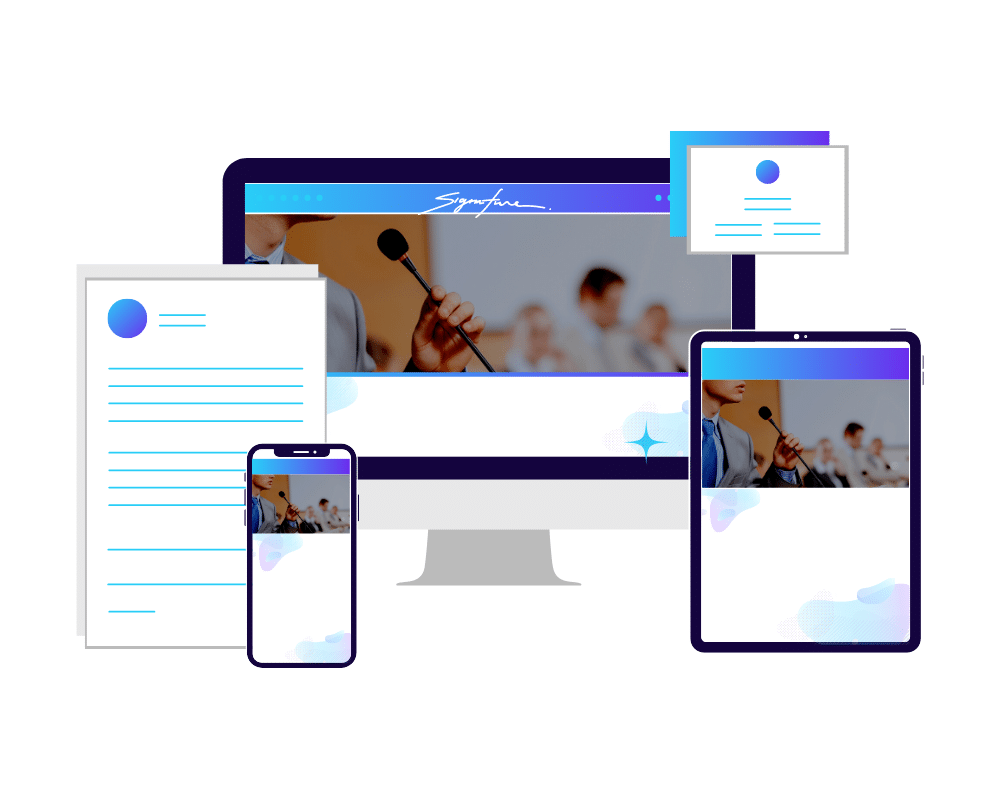
On the flip side, inbound marketing is about attracting potential clients without directly contacting them or, as HubSpot puts it, “attract[ing] customers by creating valuable content and experiences tailored to them. While outbound marketing interrupts your audience with content they don’t always want, inbound marketing forms connections they are looking for and solves problems they already have.” Examples of inbound marketing include blogs, podcasts, videos, and social media posts.
Combined, these marketing channels provide leads for your sales outreach, as anyone that interacts with your brand – inbound or outbound – has opted in to further communication.
Furthermore, inbound marketing allows you to demonstrate your expertise and dedication to your focus industry. It might sound dramatic but the more free and useful content you provide for your audience, the more they’ll trust you enough to purchase your paid offerings. That goes for everything from a $5 ebook on your website to a $5,000 speaking gig.
Pro Tip: For each element of your inbound and outbound marketing strategies, don’t forget about branding. If all of your marketing channels are consistently beautiful and informative, it’ll add to your professionalism and perceived authority in the eyes of potential clients, which can be the tipping point between you and a competitor.
Expand Your Sales Education
The fourth way to grow your speaker fees, as we’ve mentioned time and time again, is to master your sales processes. Even if you have a sales background, many “classic” sales strategies tend to fail in the speaking industry. For example, one common strategy is the “spray and pray” method of sending mass email campaigns to a list of potential clients. For the speaker, this is quick and easy. But, from an event organizer’s perspective, this tends to imply that you see them primarily as a potential sale. In other words, they feel like you see them as a number, not a potential partner, and so are unlikely to respond.
Another example is the famous “ABC” idea, or “Always Be Closing.” If you’re not a Glengarry Glen Ross fan, this saying stresses the importance of always closing a potential sale, usually regardless of how uncomfortable you may be making your potential client. Because of this tendency to be pushy, the tactic of “Always Be Closing” has almost entirely gone out of style. Sure, it sounds like a power move and the thought of a lot of sales is nice, but if those clients feel like they were pushed into the deal, is it really worth it?
Modern Speaker Sales Strategies
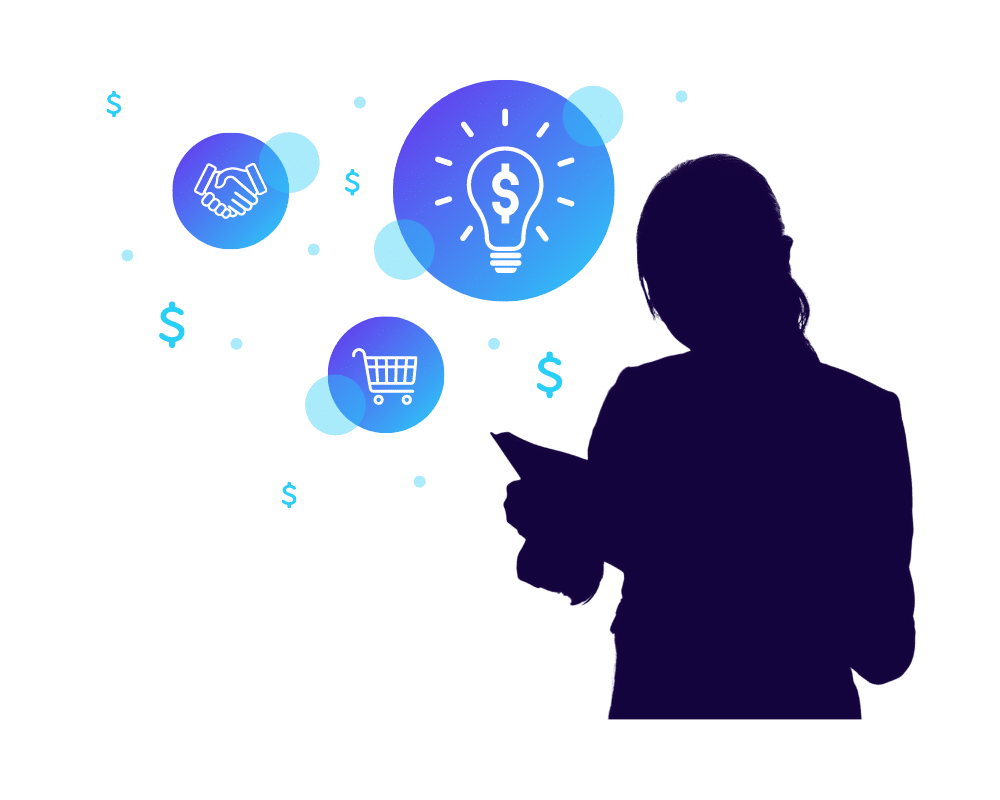
Today, at least, the answer is “no,” and the majority of event organizers prefer long-term relationships with speakers they know and trust. Specifically, rather than “spray and pray” or “ABC,” they’ll more likely to hire you if you do the following:
- Make it about them. How can you help them meet their goals, help their team, grow their revenue, etc? Your goal is to be there for them to help make their event as successful as possible.
- Follow up consistently. Be mindful of their busy schedule and that they may be considering other speakers. Don’t wait for them to contact you – email or call them first. A CRM is immensely helpful for this, so if you aren’t already using one, start now.
- Be convenient. If you’re easy to work with, understanding of their schedule, and polite, they’ll remember you and – more likely than not – hire you.
- Be reliable. Stick to your word and, when possible, go above and beyond for your clients. The more you can support them now, the more referrals or repeat business they’ll send you later.
Remember the Law of Averages (Don’t Give Up!)
Lastly, as you work to increase your speaker fees, the most important thing to keep in mind is the “Law of Averages.” Simply put, this idea states that, out of a large pool of speaking opportunities, only a small percentage will pan out. Even for the most famous, most experienced, most expensive speakers, some event organizers just simply aren’t looking for their products or services, and that’s okay!
As you increase your speaker fees and find the range that works best for your target audience, remember that consistent effort is what truly matters. If you’re willing to put in the work to improve your sales skills, your speaking programs, and your personal brand – even when some planners say your fees are too high – the money will follow. Just stay focused, and, most importantly, don’t sell yourself short. 🙂
For more information about setting your speaker fees, visit our previous guides, “How Much Should I Charge As A Speaker?” and “7 Steps To Take If You Want To Charge Higher Speaking Fees”.
Additionally, for more hands-on guidance and resources, join SpeakerFlow University! With courses and content specific to the speaking industry, this program brings technology, strategy, and community under one roof, so you can steadily improve with the support of other speakers. Check out our University page or shoot us an email to learn more. 🙌


